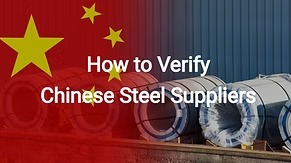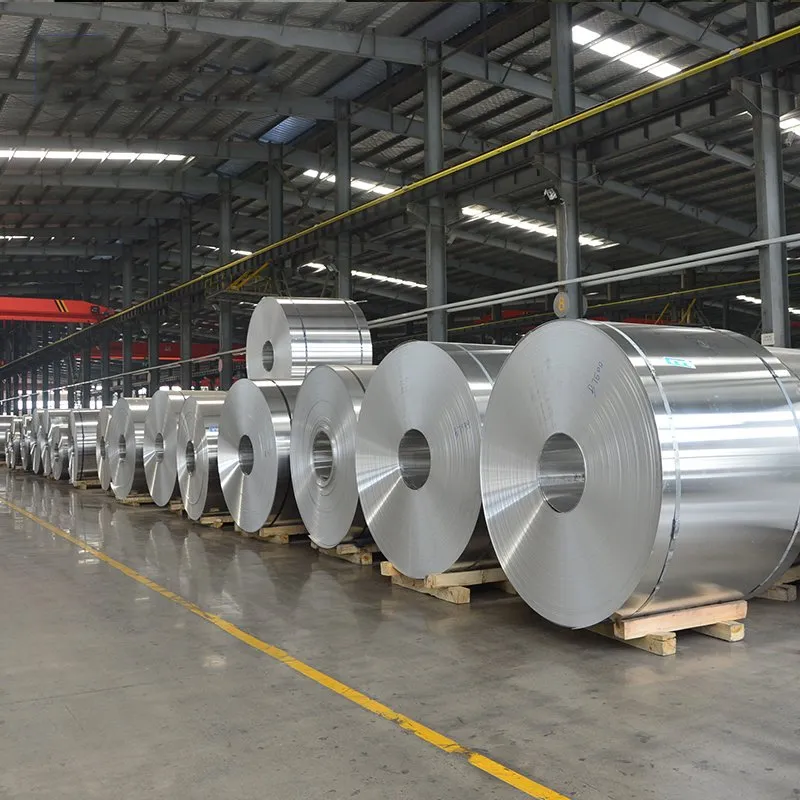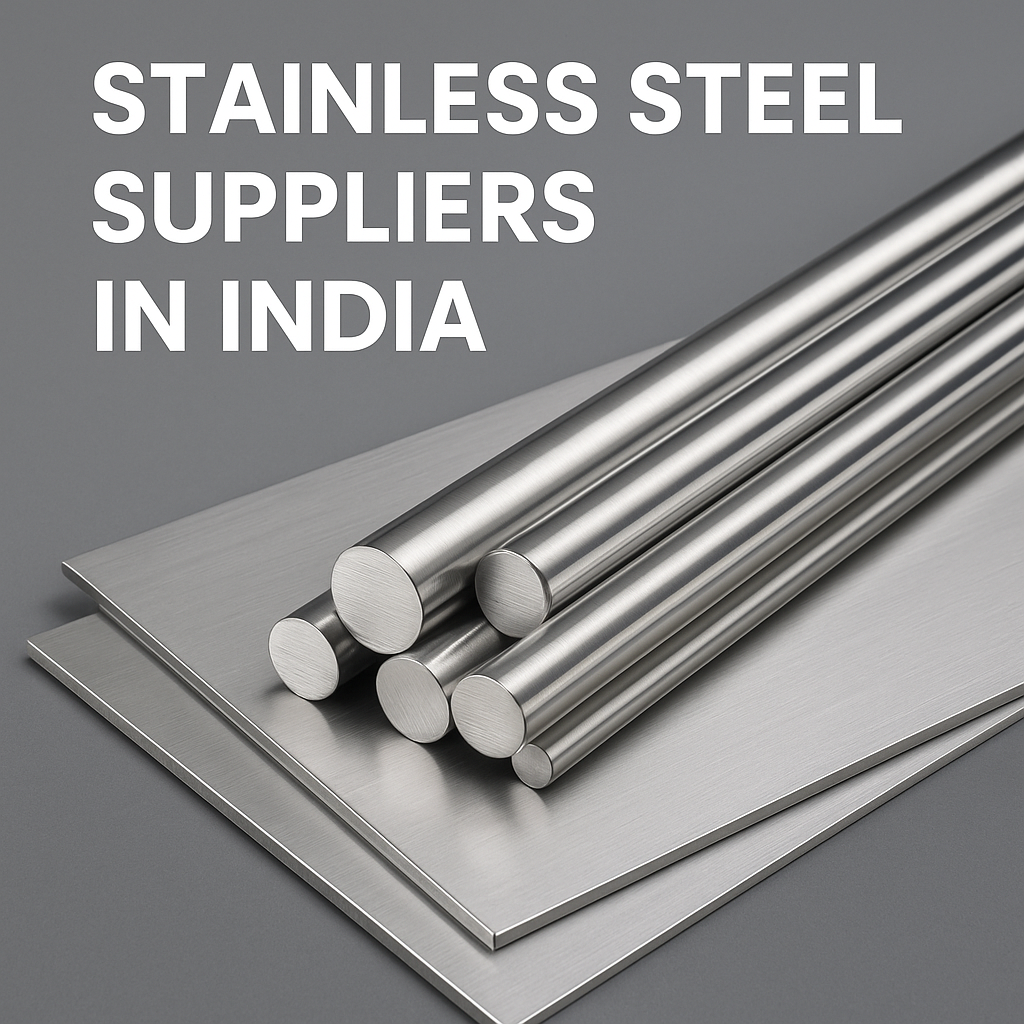Industrial Uses of Steel: Focus on 304 Stainless and Galvanized Steel
Steel – an alloy of iron and carbon – is the backbone of modern industry thanks to its strength, durability and versatility. Because of its high tensile strength and relatively low cost, steel is one of the most commonly used materials worldwide. It is found in almost every sector of the economy: buildings (structural beams, concrete reinforcement), bridges and infrastructure, machines, vehicles (cars, trucks, trains, ships) and consumer products (appliances, tools, furniture). If you’re wondering what steel is used for, the list is essentially limitless – from skyscrapers to kitchen knives. In industry, steel is used for construction, manufacturing equipment, transportation, utilities and more. Within the broad steel family, 304 stainless steel and galvanized steel are two highly important variants. Each has unique properties suited to specific applications. This post explains each type, their key properties, advantages, and common industrial uses (including construction, food processing, automotive, etc.), and compares when each is preferred.
Understanding Steel and Its Uses
In general, steel is an alloy made by combining iron with a small percentage of carbon (usually <2%). This combination yields a metal much stronger and more fracture-resistant than pure iron. By varying the carbon content and adding other alloying elements (like chromium or nickel), manufacturers produce steels with very different properties. The result is a vast range of steel grades: from plain carbon steels to weathering steels to stainless steels. Because of its strength, durability and formability, steel finds use in nearly every industry. For example, steel is used in construction for building frames, reinforcing bars, roofing and bridges. It is used in manufacturing for machinery, tools, pipelines and storage tanks. In transportation it makes up car bodies, railcars, and ship hulls. It is used in energy (power plants, pipelines) and consumer goods (appliances, furniture, electronics).
In short, when asking “what steel is used for,” the answer spans virtually every sector: building structures and infrastructure, automotive and aerospace, appliances and packaging, energy and utilities, and so on. Steel’s ubiquity comes from its combination of strength, stiffness, weldability and cost-effectiveness. Within this context, stainless steels (like 304) and galvanized steels are specialized classes tailored for corrosion resistance and durability in harsh environments. Each type is chosen where specific performance characteristics are needed – for example, long-term corrosion protection or hygienic surfaces. Below we explore these two steels in detail.
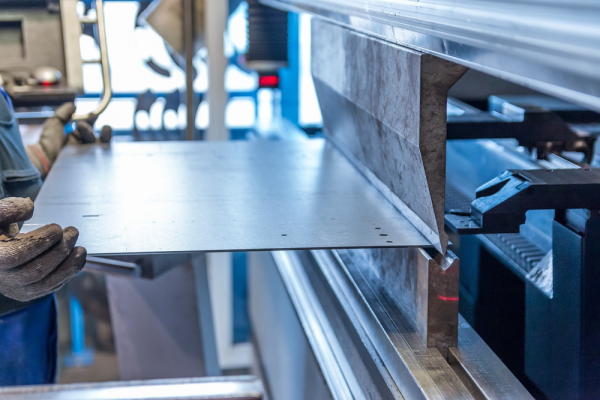
304 Stainless Steel: Definition and Key Properties
304 stainless steel is one of the most common stainless alloys. It is an austenitic stainless steel (also known as AISI 304 or type 304), containing roughly 18% chromium and 8–10% nickel (often denoted 18-8). This composition gives it the hallmark property of stainless steels: excellent corrosion resistance. In fact, 304 was the first widely used stainless steel grade and remains the world’s most produced stainless alloy. Its official specification is SS 304 (European 1.4301, alloy X5CrNi18-10). The high chromium forms a thin, protective oxide film on the surface that prevents rust in most environments.
Key properties of 304 stainless steel include: good formability and weldability (it can be readily bent, formed or welded); very good corrosion resistance even without special heat treatment; and a durable, attractive finish (it polishes well and has a shiny, high-quality appearance). 304 stainless retains strength up to high temperatures (around 600 °C). It has a relatively low carbon content (max 0.08%) to minimize carbide precipitation, which enhances its corrosion resistance. In short, 304 stainless is valued for combining strength, formability, and corrosion resistance. It is non-magnetic in the annealed (soft) condition and maintains its properties in freezing or very hot conditions, making it versatile for many industrial uses.
- Composition: ~18% Cr, 8–10% Ni (notably, austenitic grade).
- Corrosion Resistance: Excellent in water, many chemicals and environments, including mild acids and cleaning solutions.
- Weldability/Formability: Easily welded with standard processes; good ductility allows bending, shaping and deep-drawing.
- Surface Finish: Smooth, bright finish; can be polished to a high shine. It is hygienic and easy to clean (important for medical/food use).
- Temperature Range: Maintains properties at cryogenic and elevated temperatures (up to ~600 °C).
What Is 304 Stainless Steel Used For?
In industry, 304 stainless steel is used wherever corrosion resistance, cleanliness and durability are required. Typical applications include equipment, structures and components in the food processing, chemical, and pharmaceutical industries. For example, 304 is used to make storage tanks, reactors and piping for chemicals, acids or food-grade products, because it can withstand moisture and mild acids without corroding. In the food and beverage sector, 304 stainless is common in brewery tanks, dairy equipment, kitchen sinks, countertops and appliances due to its hygienic surface and resistance to organic acids and cleaning agents.
Other major uses of 304 stainless include architectural elements and consumer fixtures. It is often used for architectural panels, railings, elevator doors and trim because it maintains a long-lasting polished look outdoors or indoors. In the automotive industry, 304 finds use in exhaust systems, trim, and decorative trim – parts where its heat resistance and corrosion protection (especially from road salt) are valuable. Similarly, marine hardware (boat fittings, railings, fasteners) often uses 304 stainless to resist saltwater corrosion. It is also used in medical and surgical equipment (sinks, trays, tools) because it can be sterilized easily.
In summary, common industrial applications of 304 stainless steel include:
- Food, Beverage, Pharmaceutical: Tanks, pipes, valves, and equipment in food processing plants and breweries (resists acids and easy to clean).
- Chemical & Petrochemical Equipment: Reactors, heat exchangers and storage vessels for chemicals (withstands many corrosive fluids).
- Architectural & Construction: Interior and exterior panels, railings, hardware and fixtures that need an attractive, rust-free finish.
- Automotive & Transportation: Exhaust systems, trim pieces, and structural parts exposed to weather or corrosive conditions.
- Marine & Offshore: Boat hardware, fittings, fasteners and railings in marine environments (saltwater-resistant).
- Medical & Laboratory: Surgical tables, trays, sinks and sterilizable equipment (non-porous and sanitary).
- Water Treatment & Plumbing: Pipes, valves and treatment tanks (excellent resistance to water and moisture).
- Consumer & Appliances: Kitchen sinks, countertops, cookware and major appliances (modern look and hygiene).
Galvanized Steel: Definition and Key Properties
Galvanized steel is ordinary steel (typically mild or carbon steel) that has been coated with a protective layer of zinc. The most common method is hot-dip galvanizing: the steel is cleaned and then immersed in a bath of molten zinc. The zinc bonds metallurgically to the steel surface, creating a coating that prevents rust. Essentially, galvanized steel means steel “with a zinc jacket.” The zinc acts as a sacrificial anode: if the coating is scratched, the zinc will corrode preferentially, protecting the underlying steel.
This galvanized zinc coating gives the steel some key properties and benefits:
- Corrosion Protection: The zinc layer provides strong rust resistance in outdoor and harsh environments. Zinc is less reactive than steel, so it shields steel from oxygen and moisture. Even if damaged, the coating “self-heals” by corroding itself rather than the steel.
- Durability: Galvanized steel lasts much longer than plain steel in corrosive conditions. In average environments, a galvanized steel part can last 50+ years without maintenance (even over 20 years in severe outdoor/wet conditions).
- Cost-Effectiveness: Because it uses ordinary steel as a base, galvanized steel is relatively inexpensive compared to stainless or other alloys. The galvanizing process can coat complex shapes quickly, making it economical for mass production.
- Low Maintenance: It arrives ready to use – no need for painting or coating after galvanizing. The tough zinc layer tolerates rough handling and protects corners and edges where paint would fail.
- Temperature Resistance: Galvanized steel can be used in moderately hot conditions (up to about 200 °C or 392 °F). Above that, the zinc can oxidize and flake off, so very high-temperature applications typically use other methods of corrosion protection.
- Appearance: Galvanized steel typically has a matte gray, patterned finish (often a spangled crystalline pattern from the galvanizing). It is less “shiny” than stainless, but it has an industrial look that is often acceptable for construction.
In summary, galvanized steel provides affordable, long-lasting corrosion resistance for steel parts. It retains the strength and formability of the underlying steel, while the zinc layer ensures rust protection. Because of these traits, galvanized steel is extremely common in environments where steel is exposed to the elements.
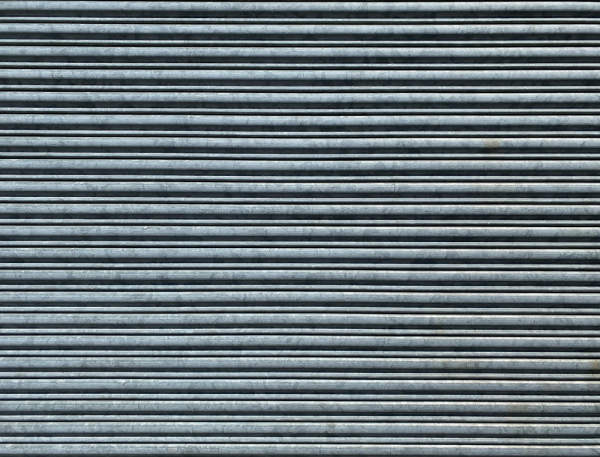
What Is Galvanized Steel Used For?
Galvanized steel is widely used wherever inexpensive corrosion protection of steel is needed. Its applications span many industries, particularly construction and infrastructure. Common uses include:
- Construction and Infrastructure: Galvanized steel is ubiquitous in building projects. It is used for structural beams, support columns, rebar (reinforcing rods), and roofing components. For example, galvanized steel framing, trusses, and decking are popular in modern construction because they resist rust for decades. Galvanized pipes and tubes are also used in plumbing and drainage, since they don’t corrode as easily as bare steel. Accessories like gutters, downspouts, fence panels, wire fencing, handrails and streetlight poles are often galvanized to endure the weather.
- Automotive Industry: Since the 1980s, most new cars have used galvanized steel for the body and frame. Approximately 80% of a typical car’s body-in-white (the assembled steel body before painting) is made of galvanized steel. The zinc coating prevents rusting from road salt and moisture, allowing auto manufacturers to offer extended anti-rust warranties. In addition to body panels, galvanized steel is used for chassis parts, brackets and exhaust components.
- Agriculture: Farm equipment and structures use galvanized steel for durability in harsh outdoor environments. Tractors, livestock feeders, barns, silos, fencing, and greenhouse frames are often galvanized. The zinc coating helps these items resist constant moisture, fertilizers and barnyard conditions, giving them a lifetime measured in decades.
- Energy and Utilities: Galvanized steel is popular in renewable energy installations. For instance, solar panel frames, wind-turbine towers, and their supporting structures are often galvanized to ensure they require minimal maintenance over long service lives. Similarly, telephone and utility poles, transmission towers, and streetlight poles use galvanized steel so that repair needs (which are costly at height) are minimized.
- General Manufacturing: Many everyday products and equipment are made from galvanized steel. Common examples include toolboxes, ladders, hardware (screws, nails, fasteners), cargo containers and outdoor furniture. Even galvanized steel wire is used for safety railings and mesh. The characteristic gray, matte finish is acceptable in these applications, and the low cost is attractive for mass production.
Comparing 304 Stainless Steel and Galvanized Steel
While both 304 stainless and galvanized steel provide corrosion protection, they serve different needs. Corrosion Resistance: 304 stainless steel has superior resistance in many environments (especially against acids and salts) because its alloy itself is inherently stainlessbortec-group.com. Galvanized steel relies on the sacrificial zinc; if the coating is breached or wears thin, rust can form on the underlying steel. In highly corrosive or marine conditions, stainless steel will outlast galvanized. However, galvanized steel still offers very good rust protection for typical outdoor conditions (rain, humidity, etc.) at a much lower cost.
Cost and Maintenance: Galvanized steel is significantly cheaper than stainless. The initial material cost of 304 stainless can be roughly 3–5 times that of galvanized steelunifiedalloys.com. For budget-sensitive projects where ultra-high corrosion resistance is not required, galvanized steel is often chosen for its affordability. Because galvanized steel requires essentially no further finishing, maintenance costs are also low. Stainless steel costs more upfront, but it may not need replacement or coatings later, which can be an advantage in the long run.
Temperature and Fabrication: 304 stainless can handle high temperatures (up to ~600 °C) without losing strength, whereas the zinc coating on galvanized steel should not be exposed to temperatures much above ~200 °C. In welding and fabrication, stainless steel and galvanized steel also differ: galvanized steel must have the zinc coating removed near welds to avoid toxic fumes. Stainless steel is easily weldable as-is.
Appearance and Hygiene: Stainless steel has an attractive, bright finish and is non-porous, making it ideal for aesthetic or sanitary applications (kitchens, hospitals). Galvanized steel’s dull, spangled surface is less attractive but is acceptable for industrial uses. It’s also not used in food-contact applications (since zinc can contaminate foods), whereas 304 stainless is food-safe.
Recyclability: Both are recyclable, but stainless steel recycling is simpler – it can be melted down and reformed with consistent alloy content. Galvanized steel, when recycled, loses its zinc which must be re-galvanized after remanufacture.
In practice, many industries use both metals for different parts. For example, automotive manufacturers use galvanized steel for body panels (cost-effective rust protection) and use 304 stainless steel for exhaust components (which see high heat and corrosive exhaust gases). Construction projects might use galvanized steel beams and fasteners for structure, while specifying 304 stainless for high-end handrails or kitchen fixtures. The chemical and food industries often default to 304 stainless for most equipment due to safety and cleanliness, even though some outer structural supports might be galvanized.
Ultimately, choosing between them depends on the environment, budget, and functional needs. If long-term resistance to salt, acids, or sterilization is required, 304 stainless is usually best. If low cost and general rust protection for steel items exposed to weather or moisture is the goal, galvanized steel is the preferred option.
Industry Applications Summary
In summary, steel’s uses in industry range from heavy infrastructure to consumer goods. Galvanized steel is especially common in construction and utility sectors, for things like framing, rebar, poles, roofing, fencing, and highway guardrailsnationalmaterial.com. The manufacturing industry uses galvanized steel for outdoor equipment and metal goods (stairs, tool chests, hardware). Telecommunications and energy rely on galvanized steel towers and supports that need to last 20+ years with minimal upkeep.
On the other hand, 304 stainless steel is pervasive in food processing, beverage (dairy/brewery), and pharmaceutical manufacturing for tanks, piping and equipment that must remain hygienic. It is standard in architectural applications for facades, railings and accents that require a polished look. In automotive, 304 finds use in components like exhausts, trim and intake systems where durability under heat is needed. It is also widely used in medical and laboratory environments where sterilization is routine.
Each industry sector picks the steel type that fits its needs. The construction industry might ask “what steel is used for framing?” – usually galvanized. The food processing sector asks “what steel is used in equipment?” – nearly always stainless (often grade 304). Automotive uses both. General manufacturing frequently uses galvanized steel for enclosures and structures, but stainless for high-spec parts. Regardless, both 304 stainless steel and galvanized steel are indispensable materials across industry, each serving critical roles due to their specific strengths.
Sources: Authoritative materials and industry references on steel types, including BorTec (304 properties and applications, National Material Company (galvanizing process, uses, and benefits), and others covering steel fundamentals and metal comparisons, were used to ensure accurate, up-to-date information.

